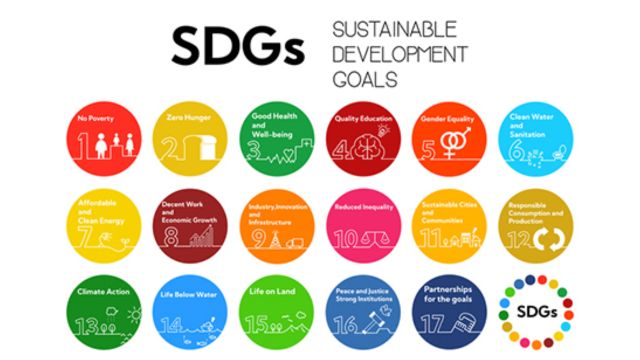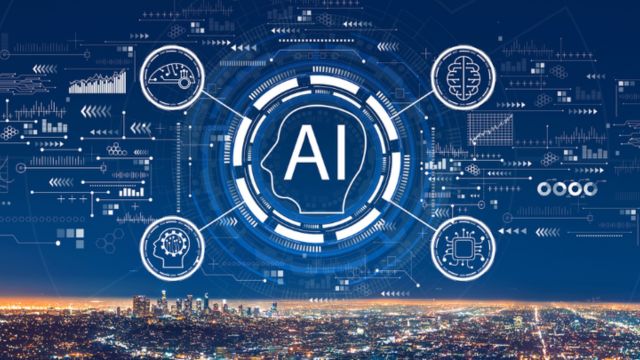The Sustainable Development Goals (SDGs) of the United Nations form a complete road map for reaching world sustainable development by 2030. Among the many problems these 17 goals cover are poverty, hunger, health, education, gender equality, clean water, and climate change. Although these objectives are high, the integration of technology has become a major enabler in enabling their execution and guaranteeing observable development.
Nowadays, one of the main forces propelling the SDG attainment is technology. Based on a joint analysis by the United Nations Development Program (UNDP) and the International Telecommunication Union (ITU), digital technologies might directly affect more than seventy percent of the SDG targets. From artificial intelligence and big data to blockchain and the Internet of Things (IoT), many technical developments are being applied to handle difficult social, financial, and environmental issues.
1. The Technology Facilitation Mechanism (TFM)
The Technology Facilitation Mechanism (TFM) was established under the 2030 Agenda for Sustainable Development to support the implementation of SDGs by promoting science, technology, and innovation (STI). The TFM is a multi-stakeholder mechanism that comprises the following key components:
- United Nations Interagency Task Team on Science, Technology, and Innovation for the SDGs (IATT): This task team facilitates coordination among UN entities, academic institutions, and private sector stakeholders to promote scientific and technological solutions aligned with the SDGs.
- 10-Member Group: A group of experts from various sectors advises the UN on STI matters, focusing on emerging technologies that can advance sustainable development.
- Multi-Stakeholder Forum on Science, Technology, and Innovation for the SDGs (STI Forum): The forum provides a global platform for sharing knowledge, showcasing innovative technologies, and discussing policy recommendations.
- Online Platform (2030 Connect): This online platform serves as a repository for information on existing STI initiatives, projects, and resources that contribute to SDG implementation. It connects governments, researchers, and businesses with relevant technology-driven solutions.
2. Digital Technologies Driving SDG Progress

Digital transformation is reshaping economies and societies, offering tools to address SDG targets more effectively. The following are some notable examples of how digital technologies are being leveraged to drive progress across different SDGs:
- SDG 1 (No Poverty): Financial inclusion platforms, mobile banking, and digital payment systems are helping underserved populations access financial services, reducing poverty and promoting economic stability.
- SDG 3 (Good Health and Well-being): Telemedicine, health information systems, and digital health monitoring tools are expanding access to quality healthcare, particularly in remote and underserved areas.
- SDG 4 (Quality Education): E-learning platforms, online courses, and digital literacy programs are providing educational opportunities to students in low-income and rural regions, thereby reducing educational disparities.
- SDG 8 (Decent Work and Economic Growth): Digital finance, blockchain-based supply chain management, and e-commerce platforms are creating new employment opportunities and enhancing economic resilience.
- SDG 13 (Climate Action): Climate monitoring tools, AI-driven climate models, and environmental data analytics systems are aiding in climate risk assessment, disaster preparedness, and sustainable resource management.
3. Artificial Intelligence and Sustainable Development
Artificial Intelligence (AI) is emerging as a transformative technology in achieving the SDGs. It is being applied across various sectors to address pressing global challenges:
- Agriculture (SDG 2 – Zero Hunger): AI-powered analytics are optimizing agricultural practices, predicting crop yields, and minimizing food waste. Data-driven decision-making enables farmers to implement sustainable farming techniques and manage resources more effectively.
- Healthcare (SDG 3 – Good Health and Well-being): AI applications are improving disease diagnosis, drug discovery, and patient monitoring. Predictive analytics tools are being used to track disease outbreaks and allocate medical resources efficiently.
- Climate Action (SDG 13 – Climate Action): AI models are predicting weather patterns, assessing climate risks, and suggesting data-driven interventions to mitigate environmental degradation.
However, the United Nations emphasizes that access to AI technologies must be equitable. A proposed Global AI Fund is under consideration to help developing nations harness AI for sustainable development without exacerbating existing inequalities.
4. Technology Support for Least Developed Countries (LDCs)
The UN Technology Bank for Least Developed Countries (LDCs) was established to bridge the digital divide by supporting these countries in accessing appropriate technologies. The Technology Bank facilitates:
- Access to Scientific Data and Research: Providing open access to scientific journals and databases, enabling researchers in LDCs to stay updated on global scientific advancements.
- Capacity Building: Offering training programs to enhance technical skills in fields such as data science, engineering, and digital literacy.
- Technology Transfer: Assisting LDCs in adopting sustainable technologies that align with SDG targets, such as renewable energy solutions and water purification systems.
5. Capacity Building and Knowledge Sharing Initiatives
To effectively implement technology-driven solutions for SDG progress, the United Nations has launched several capacity-building and knowledge-sharing initiatives:
- 2030 Connect Platform: This online gateway connects stakeholders with resources on existing STI initiatives and digital solutions. It provides access to research, case studies, and best practices from successful projects worldwide.
Visit the platform here: 2030 Connect Platform. - Massive Open Online Courses (MOOCs): Developed by UN DESA and UNITAR, these courses focus on implementing science, technology, and innovation roadmaps for SDGs. They cover topics such as digital transformation, data management, and sustainable infrastructure development.
Access the courses at UN DESA Capacity Building. - Global Innovation Exchange (GIE): A platform that connects innovators, investors, and development organizations to accelerate technology adoption in developing countries. The GIE showcases projects that align with SDG targets and offers funding opportunities for innovative solutions.
Unlock the power of technology and stay informed about the latest government schemes, digital initiatives, and global tech innovations. Visit Digital India MIB today to explore detailed insights and resources that empower you to benefit from India’s digital transformation journey. Start exploring now!
FAQ
How Does Technology Impact SDG Funding?
Technology improves transparency and efficiency in SDG funding by enabling digital tracking, reducing corruption, and allowing donors to monitor project progress in real time, ensuring better allocation of resources.
What Are Challenges In Using Tech For SDGs?
Challenges include digital inequality, data privacy concerns, lack of infrastructure in developing regions, and the need for regulatory frameworks to ensure ethical and equitable technology use.
How Can Small Businesses Support SDGs With Tech?
Small businesses can adopt sustainable practices using affordable digital tools, participate in green supply chains, and innovate locally relevant tech solutions that contribute directly to SDG targets.
What Role Do Governments Play In Tech For SDGs?
Governments create policies, provide funding, and facilitate public-private partnerships to foster innovation, digital infrastructure development, and equitable access to technology supporting SDG achievement.
Are There Global Partnerships For Tech And SDGs?
Yes, initiatives like the UN’s Global Compact and the Sustainable Development Technology Platform foster partnerships among governments, private sectors, and civil society to advance technology-driven SDG solutions.













